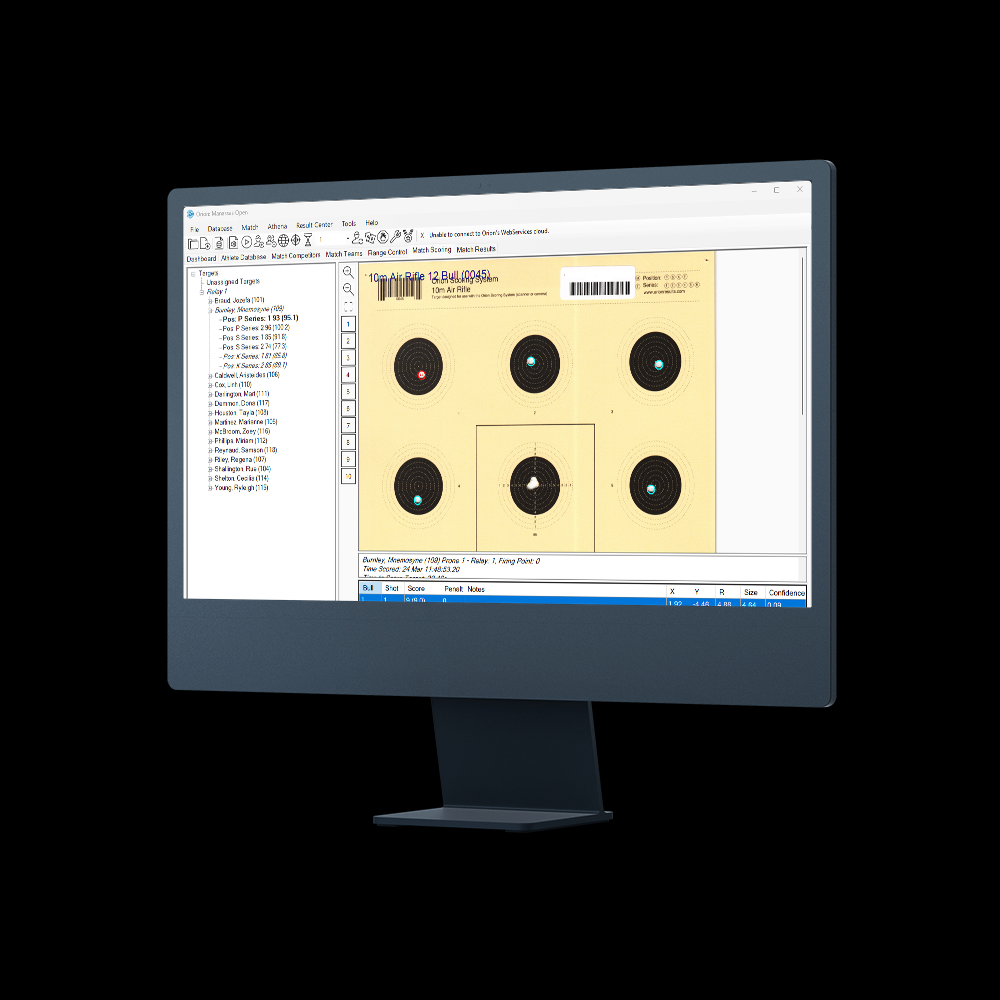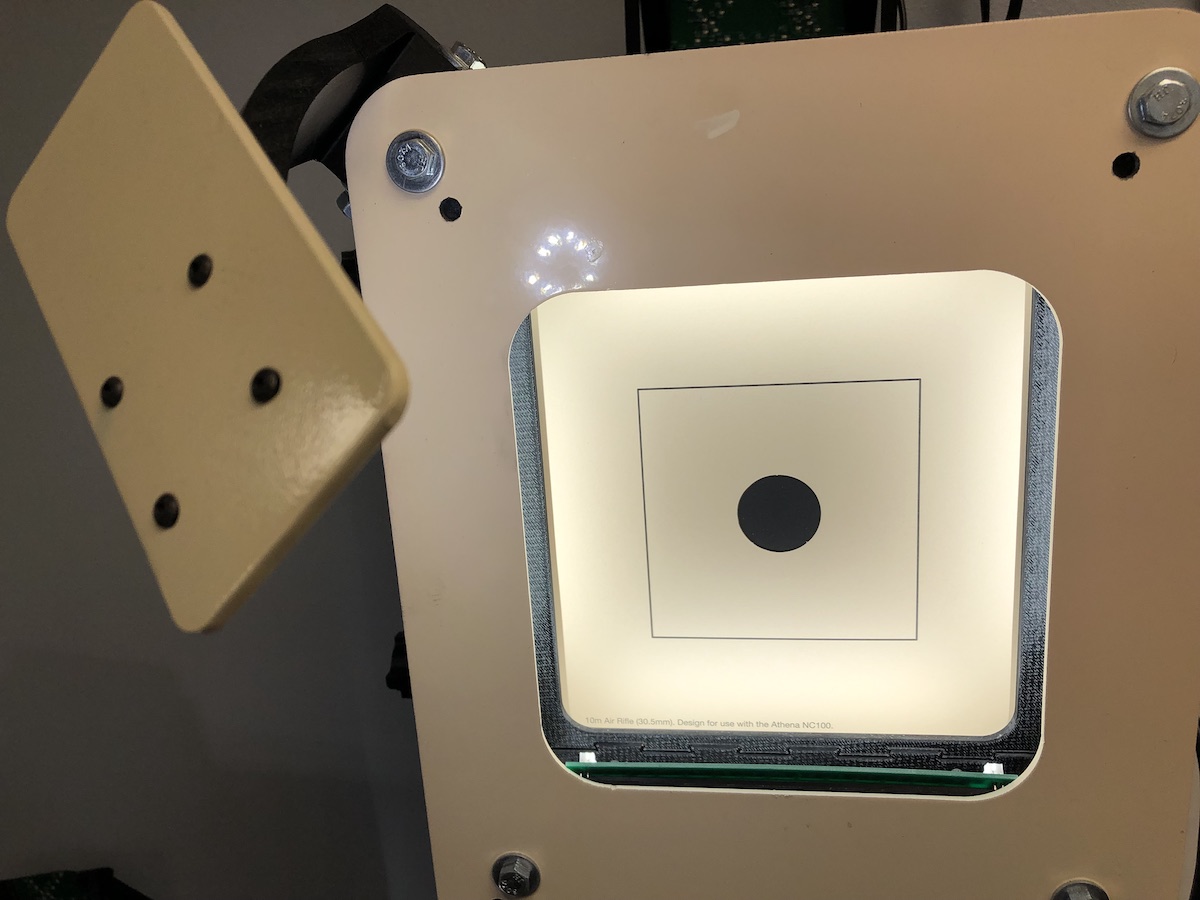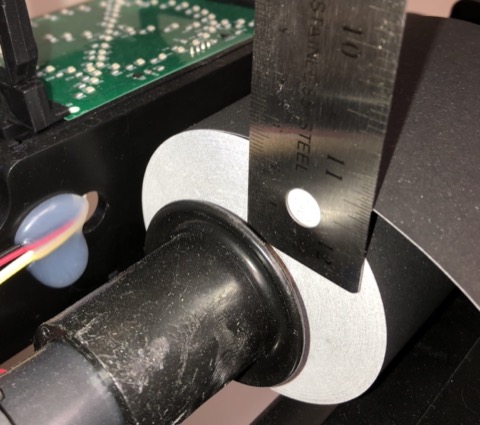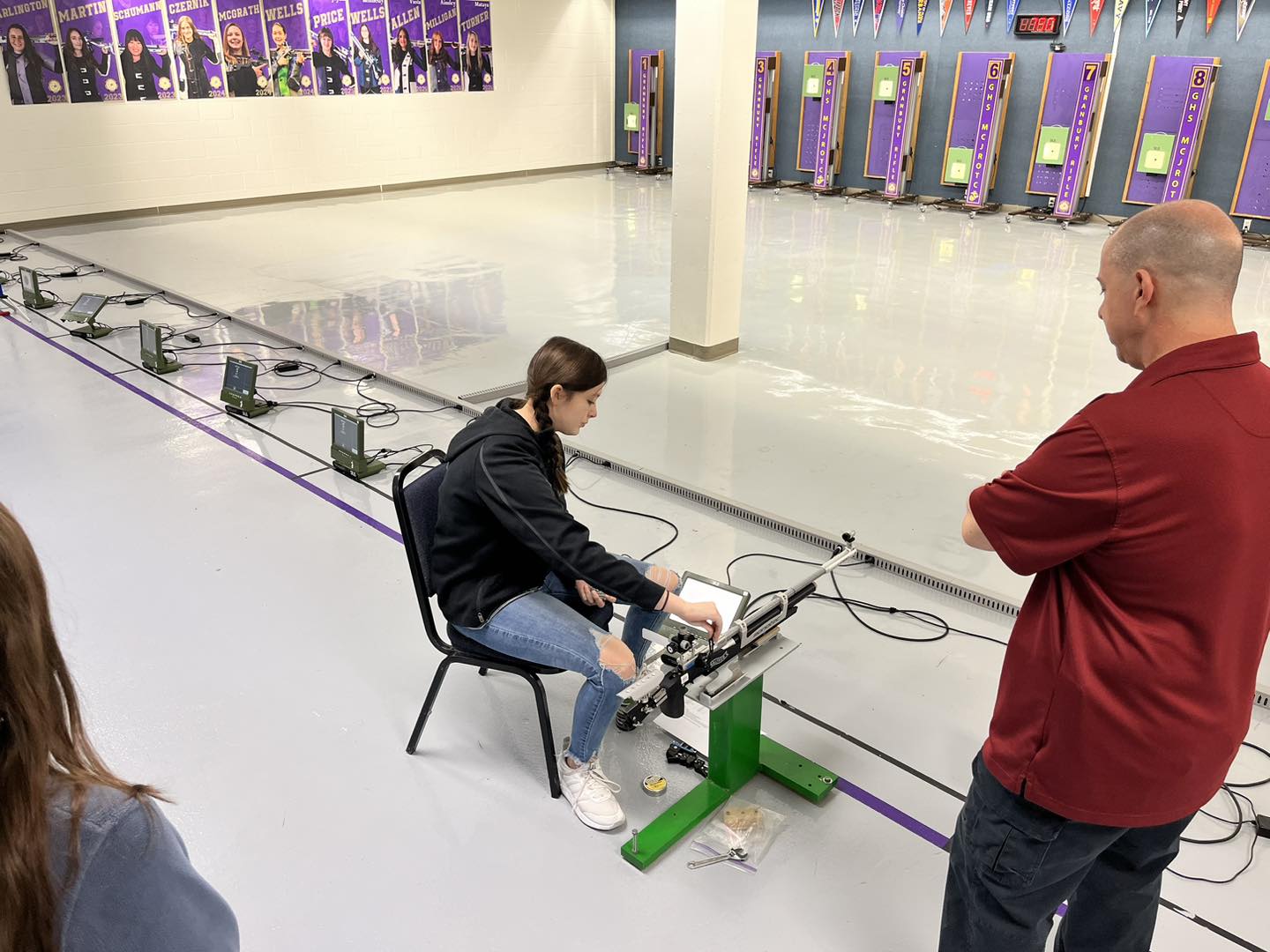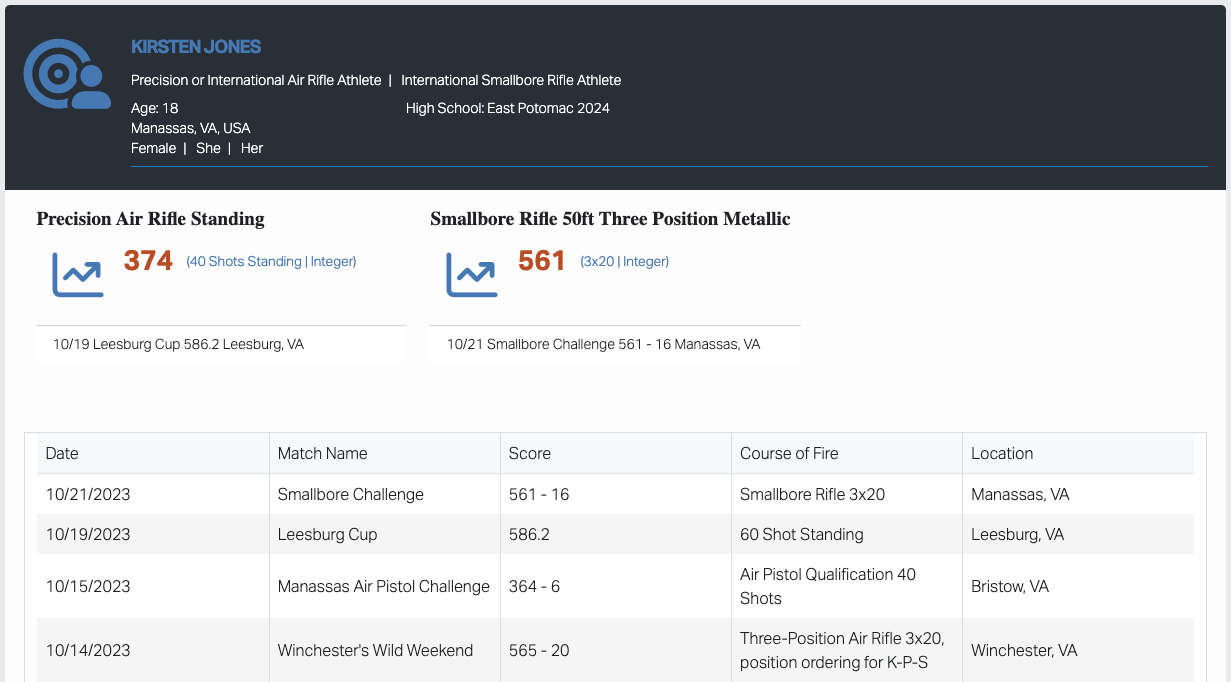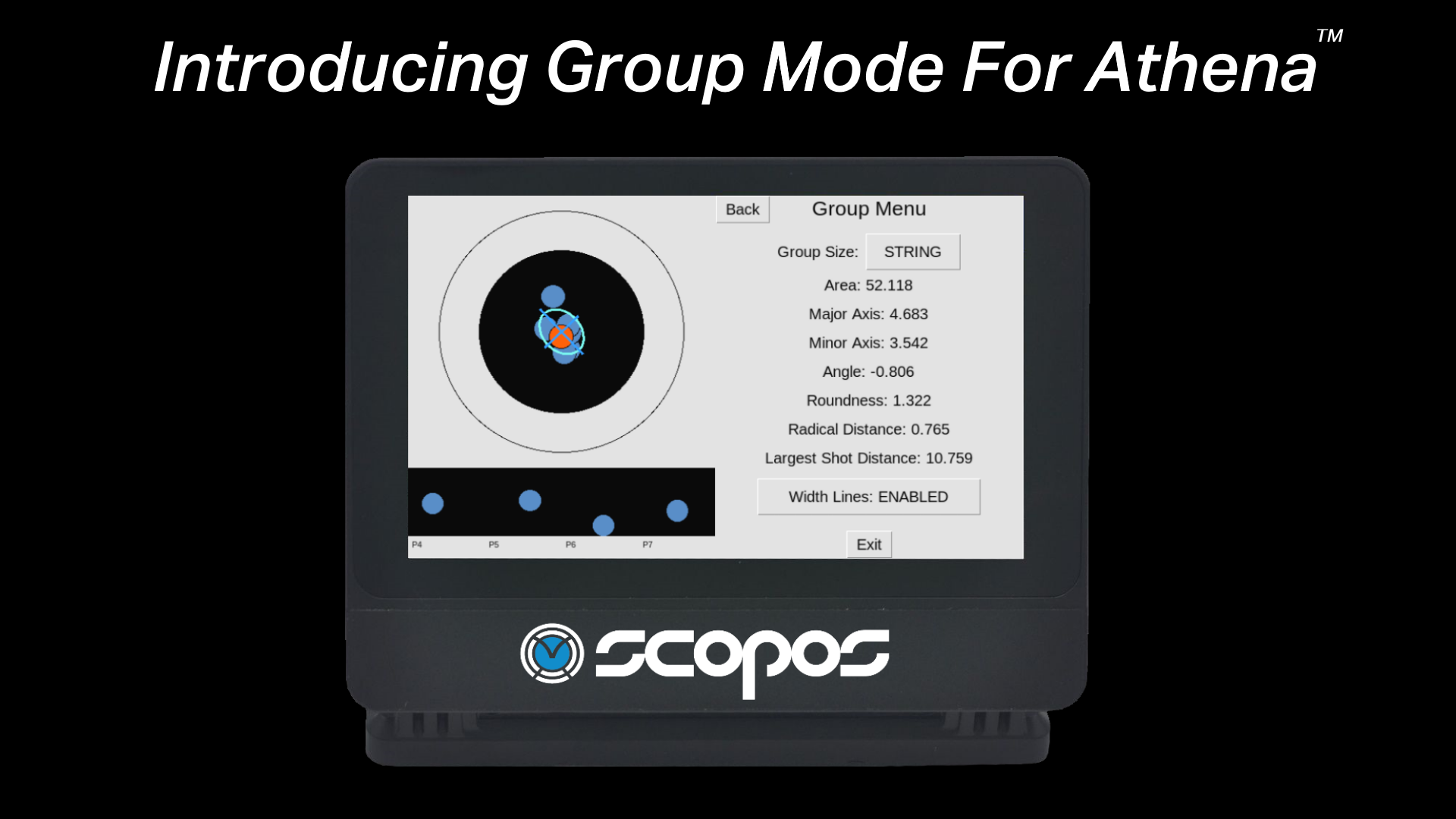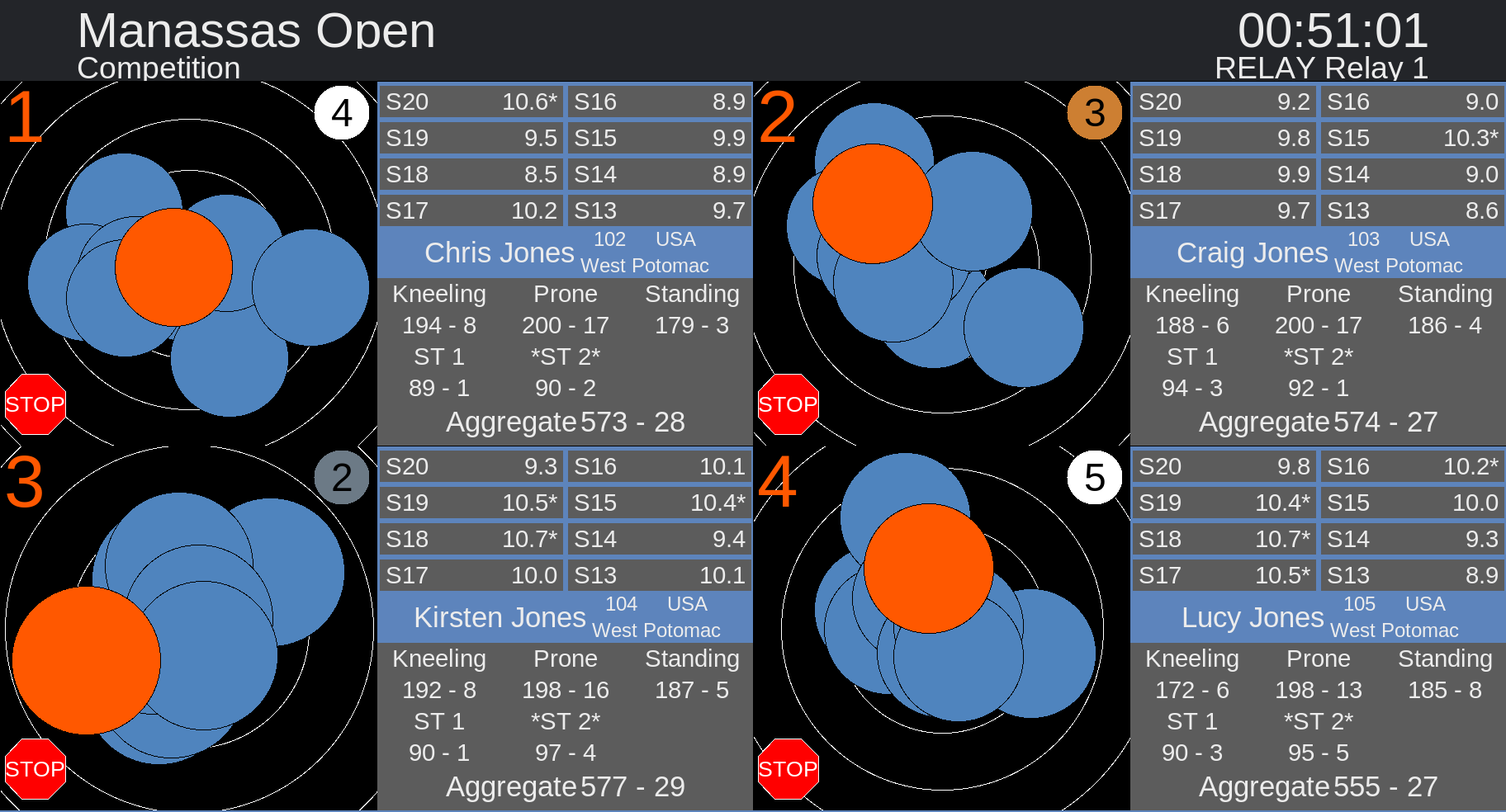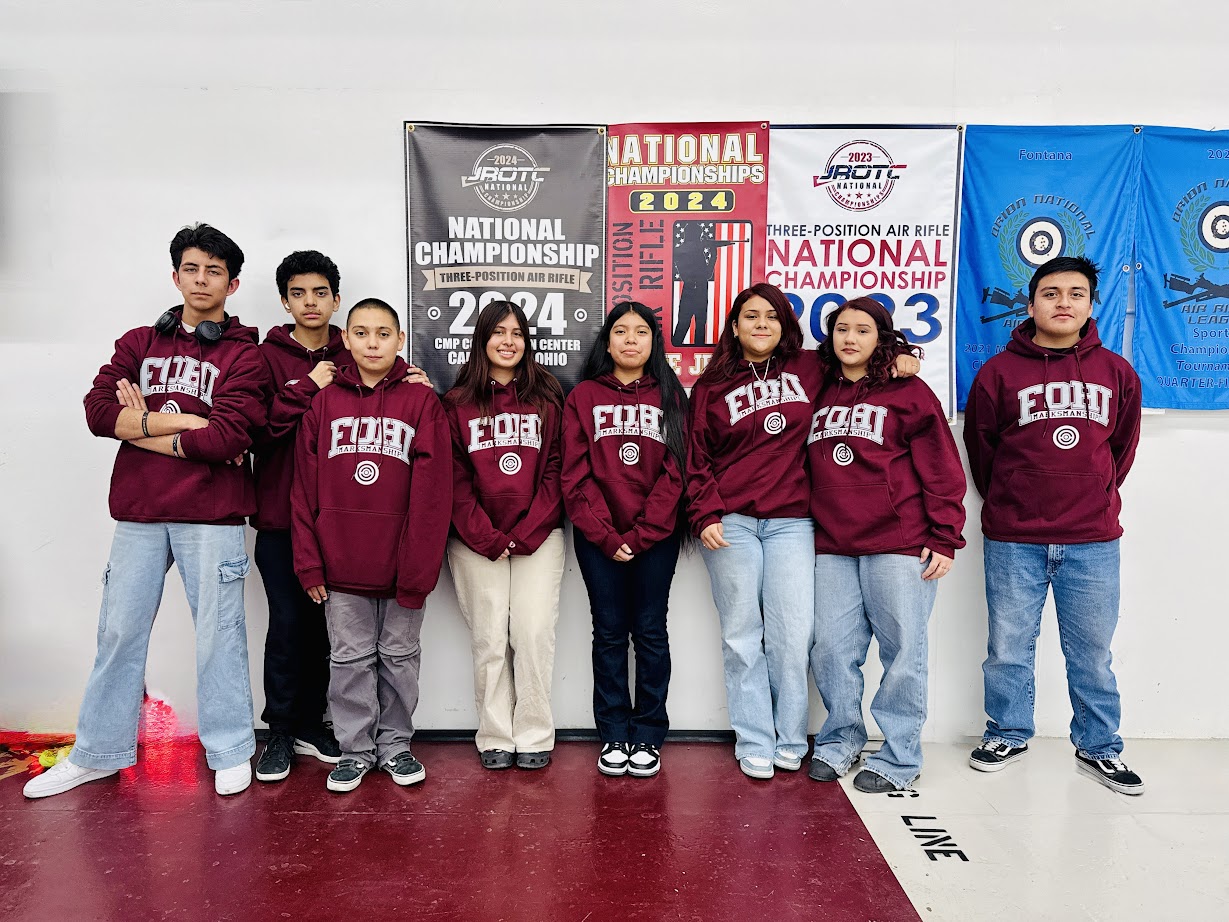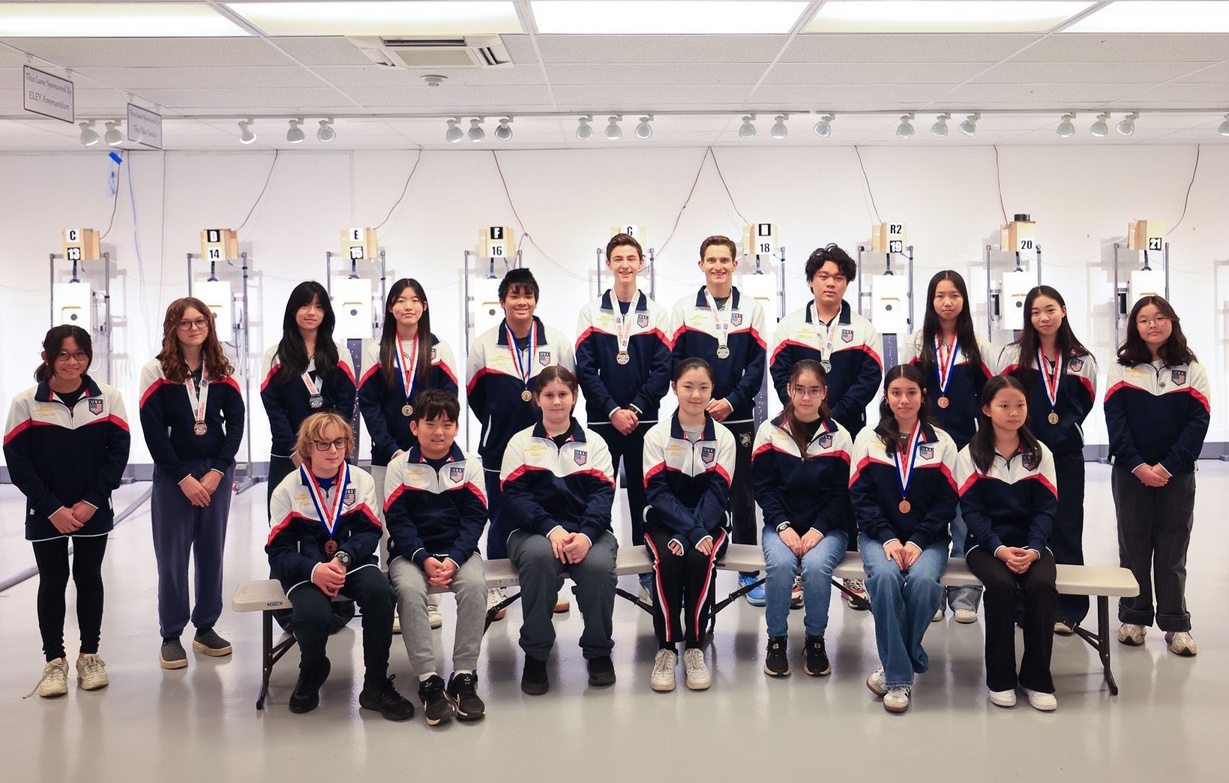We use cookies to make your experience better. To comply with the new e-Privacy directive, we need to ask for your consent to set the cookies. Learn more.

Developing a New Paper Target for Orion
This past year the Civilian Marksmanship Program and Shooter’s Tech teamed up to develop a new paper target for the Orion Scoring System. The newly developed “300m Rifle reduced for 100yd. Target” (commonly called the 100yd. International target) was used in the National Matches over the summer. This essay describes the development of the target, with the goal of helping customers understand the steps we go through to ensure accuracy in the target and scoring algorithm.
There are three broad steps when developing a new target.
- Create the artwork for printing.
- Printing the target’s art work.
- Updating Orion and testing the new target for accuracy.
Step 1 Creating the artwork for printing.
Creating the artwork for the 300m Rifle reduced to 100yd. Target proved to be the most challenging. Not because of any technical issues, but errors in the scoring ring calculations in the NRA and USAS rulebooks.
We knew the eventual artwork will be similar in design to our existing 100yd. Conventional Rifle Target. To meet the implicit requirements, (e.g. can be used on existing outdoor smallbore rifle frames) the target needed to have the dimensions of 42in tall by 14in wide, and the target needed to work with our existing mobile app for scoring large format targets. This meant we had to have the same competitor label box and alignment shape box near the middle of the target. Further, the location of the aiming bulls can be the same. The only big difference was going to be the number of scoring rings, going from 5 to 10.
To learn the scoring ring dimensions we first turned to the NRA rulebook, looking at their A-33 target. They report these dimensions as the reduced 300m Rifle target. “Easy peasy” we thought. To confirm though we next turned to the USAS rulebook (the last printed rulebook USAS published 2017 version). To our surprise the USAS rulebook listed different dimensions than the NRA rulebook. This contradiction led us to calculate the 300m Rifle target’s reduced dimensions ourselves. As it turned out, both the NRA and USAS were wrong, and in fact smaller than they should have been!
We turned to the CMP for guidance. After some discussions, we decided the best thing to do would be to use the correctly calculated dimensions. Once we had the dimensions, creating the artwork was easy.
Calculating Reduced Target Dimensions
However, our academic curiosities wouldn’t let us rest. We wanted to know why the NRA and USAS dimensions were wrong.
When calculating a target’s reduced scoring ring dimensions, what matters in the reduction is not the printed scoring ring diameter (i.e. the inside edge of the bullet), but rather the radial distance of the center of the bullet. Then it is a matter of scaling the radial distance from the original to the reduced distance.
Thus, to compute any target’s reduced dimensions we need to know five values. The original distance (DO), the reduced distance (Dr), the bullet diameter fired at the original target (BO), The bullet diameter fired at the reduced distance (Br), and the printed scoring ring diameter on the original target (RO). The reduced target’s scoring ring is designated at (Rr). Equation 1 displays the algebraic equation.
(Ro + Bo)/Do = (Rr + Br) / Dr
Which can then be reduced to equation 2 to solve for Rr.
Rr = ((Ro + Bo) * Dr)/Do -Br
So what did the NRA do wrong in their calculations? After some trial and error, we discovered the NRA incorrectly used a 5.6mm bullet diameter on the 300m target (BO). The ISSF clearly dictates the scoring diameter on the 300m target is 8.00mm, as it is shot with center fire rifles.
Ironically, USAS made the opposite error. They correctly used 8.00mm as the scoring diameter at 300m, but then also used 8.00mm as the reduced target’s scoring diameter. Because the intended use of the target is for smallbore rifles, the correct scoring diameter is 5.6mm.
Step 2 Printing the target’s artwork.
Printing a new target is an expensive proposition. To take advantage of the big offset printers, we have to print a lot of targets at once, and that takes money. Further, there is an expense to translate a target’s PDF art work to the printing format needed for the big printers. So when we do finally send a target to the printers, we want to check, double check, and triple check the artwork.
The first check is a manual check of the artwork. Did we draw the target correctly with the correct dimensions?
The second check is not printing on the full scale paper, but rather, printing to a commodity office printer to an 8.5 x 11in piece of paper. How could this possible work given the final artwork is to be printed on a 42 x 14in paper target? Well, since this target is intended for our mobile app, the camera doesn’t know if it's a reduced size target or the full size target. The internal reconstruction algorithm doesn’t care. Thus, we can use a simple Letter size target for importing into Orion.
Once the import process is working, we can print on an actual size paper, shoot a few holes through it, and test again. At this stage we are not using the big (expensive) offset printers, but rather worked with a local print shot that does blueprint printing. The dimensions of the target will be the same, just won’t be on the higher quality target paper. And we can afford to print only a dozen targets at this point for testing.
Only once all of this testing is complete, do we send it to National Target Company for production printing.
Step 3 Updating Orion and testing the new target for accuracy.
The final test is a full “end to end” test of the target printed for production. To get here though, we needed to update Orion to allow the “metric” targets in a 1600 prone match. “Metric” is an American colloquialism meaning the international targets (the targets defined or derived from the ISSF), instead of the conventional American targets.
As many of you know, not every target works with every course of fire in Orion. We do this for two reasons. The first technical, and is part of the “assign to” process in Orion. Physically, on the printed targets we have fill-in-the-bubbles representing the different stages in a match. For example P for Prone, S for Standing, K for kneeling. There simply is not enough room on the target to list all possibilities from all rulebooks. To overcome this, we instead can rely on barcode labels to expand the optional stages for a target available to customers.
The second reason is from the rulebooks. While we try to make Orion as configurable as possible there are limitations of what we can support. One of the limitations we had to accept is only supporting the major courses of fire from the major rulebooks. Up until the CMP adopted a 1600 prone match using the metric targets, there just wasn’t a need to support them. With the CMP adoption we choose to update Orion to allow customers to use metric targets in the 1600 prone course of fire.
With the software updates complete, it was time to test. Here we won’t lie, breaking out our rifle equipment to test Orion is one of the better perks of our jobs as developers.
The complete end to end test included the following steps.
- Creating a 1600 prone match in Orion under the CMP rulebook.
- Adding competitors and match officials, assigning them roles for the mobile app.
- Physically shooting the targets (again, one of the best parts of the job).
- Taking photographs of the targets in the field after they were shot.
- Allowing Orion to import the targets via our cloud network, score the targets, and check the accuracy.
Conclusion
The development, testing, and production of a new target for Orion is not an easy process. While the 300m Rifle reduced for 100yd. Target was relatively straightforward, we still had some challenges. Calculating the correct scoring ring dimensions was the first one. Preliminary testing of the target before printing is another. And of course updating Orion to ensure a complete and successful end to end test.
We firmly believe every competitor should get the score that they’ve earned. Given this, all of this work to ensure a current and usable target is well worth the investment.



